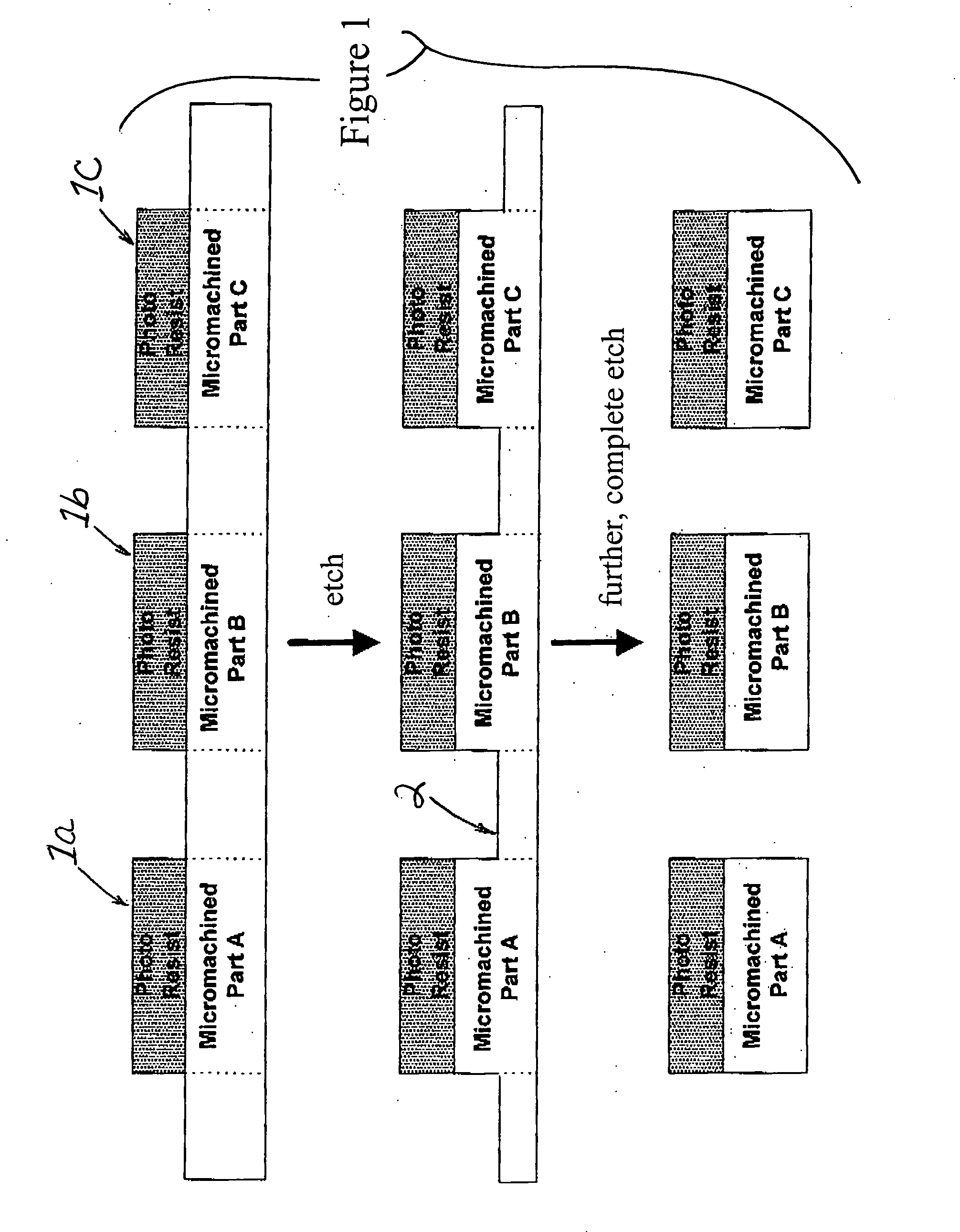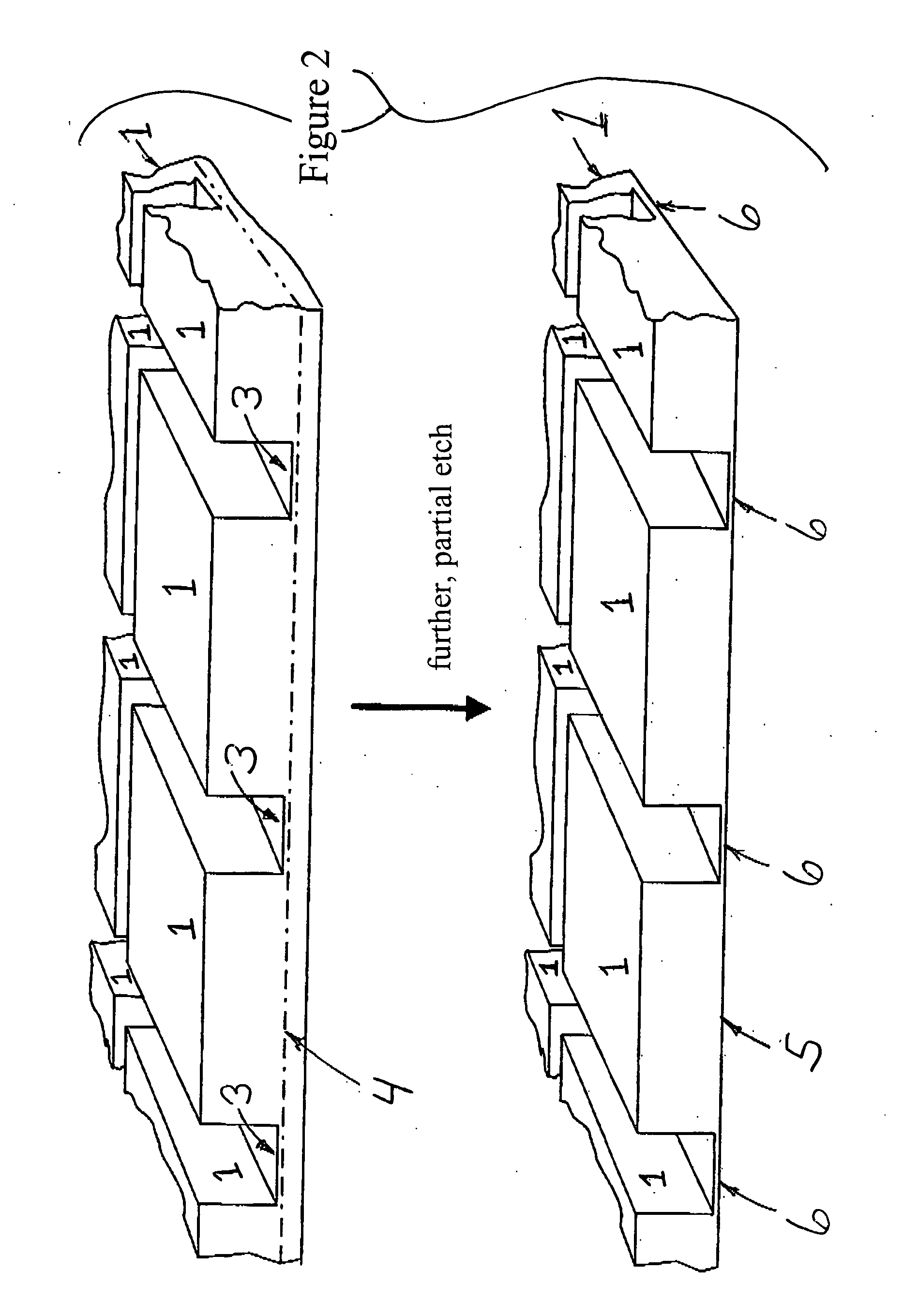Dry etch release method for micro-electro-mechanical systems (MEMS)
- Summary
- Abstract
- Description
- Claims
- Application Information
AI Technical Summary
Benefits of technology
Problems solved by technology
Method used
Image
Examples
Embodiment Construction
[0030] In creating semiconductor, micromachined or MEMS die, the process of dry-etching is commonly used. Several popular processes are known in the industry, such as the Bosch etching and Deep Reactive Ion Etching (DRIE) processes. In the present invention, these processes are applied in a number of novel ways, as to provide for the separation of die from one-another. It should be noted that, in the Figures, the depictions are of typical wafers, sectioned in the front along die boundaries and the sides and back as rough cutaways. In reality, entire wafers are constructed yielding a two-dimensional matrix of semiconductor, micromachined or MEMS die which can be fabricated and separated with the methods herein described.
[0031] Referring to FIG. 1, there is depicted a schematic, side sectional sequence of three (3) views of the through-etch method of the present invention. In this figure, three representative micromachined die A, B, and C are shown in the top-most section view coated...
PUM
 Login to view more
Login to view more Abstract
Description
Claims
Application Information
 Login to view more
Login to view more - R&D Engineer
- R&D Manager
- IP Professional
- Industry Leading Data Capabilities
- Powerful AI technology
- Patent DNA Extraction
Browse by: Latest US Patents, China's latest patents, Technical Efficacy Thesaurus, Application Domain, Technology Topic.
© 2024 PatSnap. All rights reserved.Legal|Privacy policy|Modern Slavery Act Transparency Statement|Sitemap



